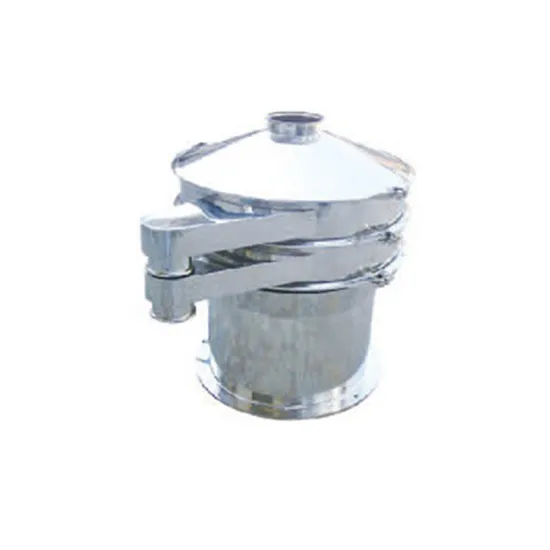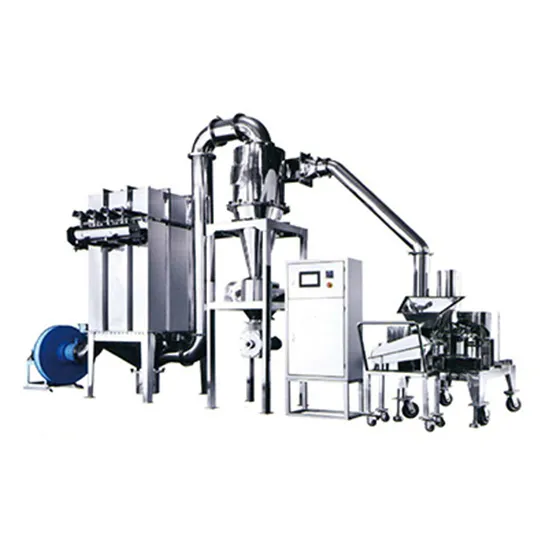NEWS
Improving Product Handling: Benefits of Drum Granulator Agglomeration
Nov 30,2023
Table of Contents:
1. Introduction: Understanding the Importance of Efficient Product Handling
2. What is Drum Granulator Agglomeration?
3. The Benefits of Drum Granulator Agglomeration
- Enhanced Product Flowability
- Improved Product Uniformity
- Reduced Dust Formation
- Increased Product Dissolution
4. How Drum Granulator Agglomeration Works
- Key Components and Operating Principles
- Granulation Mechanisms
- Process Optimization Techniques
5. Applications of Drum Granulator Agglomeration
- Fertilizer Production
- Chemical Industry
- Pharmaceutical Industry
- Food Processing
6. FAQs about Drum Granulator Agglomeration
- What materials can be agglomerated using drum granulators?
- Is drum granulator agglomeration suitable for heat-sensitive materials?
- How does drum granulator agglomeration compare to other agglomeration methods?
- Can drum granulator agglomeration be customized for specific product requirements?
- Are there any environmental considerations associated with drum granulator agglomeration?
7. Conclusion: Harness the Power of Drum Granulator Agglomeration for Optimal Product Handling
1. Introduction: Understanding the Importance of Efficient Product Handling
Efficient product handling is crucial for industries to ensure smooth operations and maximize productivity. In this article, we will explore the benefits of drum granulator agglomeration, a process that enhances product handling by improving flowability, uniformity, and dissolution, while reducing dust formation.
2. What is Drum Granulator Agglomeration?
Drum granulator agglomeration is a technique used to transform fine materials into larger, more uniform granules or pellets. It involves the use of a rotating drum, where the materials are mixed, moistened, and agglomerated through a combination of rolling and tumbling actions.
3. The Benefits of Drum Granulator Agglomeration
Drum granulator agglomeration offers several advantages that make it a preferred choice for various industries:
- Enhanced Product Flowability: Agglomerated particles have improved flow properties, enabling smoother handling and transportation. This reduces the risk of clogging in processing equipment and enhances overall production efficiency.
- Improved Product Uniformity: Drum granulator agglomeration facilitates the formation of uniformly sized granules or pellets, ensuring consistency in product quality. This is particularly beneficial for industries that require precise dosing or packaging.
- Reduced Dust Formation: Fine materials, such as powders or dust, can pose health risks and lead to equipment malfunctions. Drum granulator agglomeration minimizes the generation of dust by binding the particles together, creating a safer and cleaner working environment.
- Increased Product Dissolution: Agglomerated particles have a larger surface area, resulting in faster and more efficient dissolution when added to liquids. This is advantageous for applications where quick solubility is desired, such as in the production of fertilizers or pharmaceuticals.
4. How Drum Granulator Agglomeration Works
To understand the benefits of drum granulator agglomeration, it is essential to grasp its underlying principles and mechanisms.
- Key Components and Operating Principles: A typical drum granulator consists of a rotating drum, a liquid binder spray system, and a discharge chute. The material to be agglomerated is fed into the drum while the binder is sprayed onto the particles. As the drum rotates, the particles undergo rolling and tumbling motions, leading to agglomeration.
- Granulation Mechanisms: Drum granulator agglomeration operates through various mechanisms, including coalescence, layering, and nucleation. Coalescence occurs when particles collide and stick together, layering involves the deposition of fine materials onto existing granules, and nucleation refers to the formation of new granules from individual particles.
- Process Optimization Techniques: Achieving optimal agglomeration requires careful control of process parameters such as drum speed, liquid binder concentration, and feed rate. Process optimization techniques, such as adjusting the residence time and optimizing the binder distribution, can help enhance the agglomeration efficiency and produce desired granule characteristics.
5. Applications of Drum Granulator Agglomeration
Drum granulator agglomeration finds wide applications across various industries due to its versatility and effectiveness. Some notable applications include:
- Fertilizer Production: Drum granulators are commonly used in the production of fertilizers, where they agglomerate powdered or crystalline materials to form granules with controlled nutrient content and release properties.
- Chemical Industry: Drum granulator agglomeration plays a vital role in chemical manufacturing processes by enabling the production of granular products with specific attributes, such as controlled particle size, improved handling characteristics, or prolonged shelf life.
- Pharmaceutical Industry: Agglomerated particles produced through drum granulator agglomeration exhibit enhanced flowability and dissolution, making them ideal for pharmaceutical applications. Granules or pellets offer improved drug stability, controlled release, and ease of formulation.
- Food Processing: Drum granulator agglomeration is utilized in the 香蕉传媒 industry to produce granular or pelletized products, such as seasonings, instant beverages, or vitamin supplements. It ensures uniformity and promotes ease of handling during packaging and distribution.
6. FAQs about Drum Granulator Agglomeration
Here are some frequently asked questions about drum granulator agglomeration:
- What materials can be agglomerated using drum granulators?
Drum granulators can agglomerate a wide range of materials, including powders, fine particles, flakes, or crystalline solids. Common examples include fertilizers, detergents, chemicals, 香蕉传媒 ingredients, and pharmaceutical compounds.
- Is drum granulator agglomeration suitable for heat-sensitive materials?
Yes, drum granulator agglomeration is suitable for heat-sensitive materials, as the process can be operated at lower temperatures compared to other agglomeration methods. This helps preserve the integrity and functionality of sensitive components.
- How does drum granulator agglomeration compare to other agglomeration methods?
Drum granulator agglomeration offers advantages over other methods, such as spray granulation or fluidized bed granulation. It is particularly beneficial for producing larger, more durable granules with improved flowability and dissolution characteristics.
- Can drum granulator agglomeration be customized for specific product requirements?
Yes, drum granulator agglomeration can be tailored to meet specific product requirements. By adjusting process parameters and binder formulations, the granule size, density, porosity, and release properties can be customized.
- Are there any environmental considerations associated with drum granulator agglomeration?
Drum granulator agglomeration is generally considered an environmentally friendly process. It minimizes dust emissions, reduces waste generation, and can be integrated with other sustainable practices, such as recycling or waste utilization.
7. Conclusion: Harness the Power of Drum Granulator Agglomeration for Optimal Product Handling
In conclusion, drum granulator agglomeration offers numerous benefits for improving product handling across various industries. By enhancing flowability, uniformity, dissolution, and reducing dust formation, this technique enables efficient and reliable production processes. With its versatility and customization options, drum granulator agglomeration proves to be a valuable tool for optimizing product quality and enhancing operational efficiency.
1. Introduction: Understanding the Importance of Efficient Product Handling
2. What is Drum Granulator Agglomeration?
3. The Benefits of Drum Granulator Agglomeration
- Enhanced Product Flowability
- Improved Product Uniformity
- Reduced Dust Formation
- Increased Product Dissolution
4. How Drum Granulator Agglomeration Works
- Key Components and Operating Principles
- Granulation Mechanisms
- Process Optimization Techniques
5. Applications of Drum Granulator Agglomeration
- Fertilizer Production
- Chemical Industry
- Pharmaceutical Industry
- Food Processing
6. FAQs about Drum Granulator Agglomeration
- What materials can be agglomerated using drum granulators?
- Is drum granulator agglomeration suitable for heat-sensitive materials?
- How does drum granulator agglomeration compare to other agglomeration methods?
- Can drum granulator agglomeration be customized for specific product requirements?
- Are there any environmental considerations associated with drum granulator agglomeration?
7. Conclusion: Harness the Power of Drum Granulator Agglomeration for Optimal Product Handling
1. Introduction: Understanding the Importance of Efficient Product Handling
Efficient product handling is crucial for industries to ensure smooth operations and maximize productivity. In this article, we will explore the benefits of drum granulator agglomeration, a process that enhances product handling by improving flowability, uniformity, and dissolution, while reducing dust formation.
2. What is Drum Granulator Agglomeration?
Drum granulator agglomeration is a technique used to transform fine materials into larger, more uniform granules or pellets. It involves the use of a rotating drum, where the materials are mixed, moistened, and agglomerated through a combination of rolling and tumbling actions.
3. The Benefits of Drum Granulator Agglomeration
Drum granulator agglomeration offers several advantages that make it a preferred choice for various industries:
- Enhanced Product Flowability: Agglomerated particles have improved flow properties, enabling smoother handling and transportation. This reduces the risk of clogging in processing equipment and enhances overall production efficiency.
- Improved Product Uniformity: Drum granulator agglomeration facilitates the formation of uniformly sized granules or pellets, ensuring consistency in product quality. This is particularly beneficial for industries that require precise dosing or packaging.
- Reduced Dust Formation: Fine materials, such as powders or dust, can pose health risks and lead to equipment malfunctions. Drum granulator agglomeration minimizes the generation of dust by binding the particles together, creating a safer and cleaner working environment.
- Increased Product Dissolution: Agglomerated particles have a larger surface area, resulting in faster and more efficient dissolution when added to liquids. This is advantageous for applications where quick solubility is desired, such as in the production of fertilizers or pharmaceuticals.
4. How Drum Granulator Agglomeration Works
To understand the benefits of drum granulator agglomeration, it is essential to grasp its underlying principles and mechanisms.
- Key Components and Operating Principles: A typical drum granulator consists of a rotating drum, a liquid binder spray system, and a discharge chute. The material to be agglomerated is fed into the drum while the binder is sprayed onto the particles. As the drum rotates, the particles undergo rolling and tumbling motions, leading to agglomeration.
- Granulation Mechanisms: Drum granulator agglomeration operates through various mechanisms, including coalescence, layering, and nucleation. Coalescence occurs when particles collide and stick together, layering involves the deposition of fine materials onto existing granules, and nucleation refers to the formation of new granules from individual particles.
- Process Optimization Techniques: Achieving optimal agglomeration requires careful control of process parameters such as drum speed, liquid binder concentration, and feed rate. Process optimization techniques, such as adjusting the residence time and optimizing the binder distribution, can help enhance the agglomeration efficiency and produce desired granule characteristics.
5. Applications of Drum Granulator Agglomeration
Drum granulator agglomeration finds wide applications across various industries due to its versatility and effectiveness. Some notable applications include:
- Fertilizer Production: Drum granulators are commonly used in the production of fertilizers, where they agglomerate powdered or crystalline materials to form granules with controlled nutrient content and release properties.
- Chemical Industry: Drum granulator agglomeration plays a vital role in chemical manufacturing processes by enabling the production of granular products with specific attributes, such as controlled particle size, improved handling characteristics, or prolonged shelf life.
- Pharmaceutical Industry: Agglomerated particles produced through drum granulator agglomeration exhibit enhanced flowability and dissolution, making them ideal for pharmaceutical applications. Granules or pellets offer improved drug stability, controlled release, and ease of formulation.
- Food Processing: Drum granulator agglomeration is utilized in the 香蕉传媒 industry to produce granular or pelletized products, such as seasonings, instant beverages, or vitamin supplements. It ensures uniformity and promotes ease of handling during packaging and distribution.
6. FAQs about Drum Granulator Agglomeration
Here are some frequently asked questions about drum granulator agglomeration:
- What materials can be agglomerated using drum granulators?
Drum granulators can agglomerate a wide range of materials, including powders, fine particles, flakes, or crystalline solids. Common examples include fertilizers, detergents, chemicals, 香蕉传媒 ingredients, and pharmaceutical compounds.
- Is drum granulator agglomeration suitable for heat-sensitive materials?
Yes, drum granulator agglomeration is suitable for heat-sensitive materials, as the process can be operated at lower temperatures compared to other agglomeration methods. This helps preserve the integrity and functionality of sensitive components.
- How does drum granulator agglomeration compare to other agglomeration methods?
Drum granulator agglomeration offers advantages over other methods, such as spray granulation or fluidized bed granulation. It is particularly beneficial for producing larger, more durable granules with improved flowability and dissolution characteristics.
- Can drum granulator agglomeration be customized for specific product requirements?
Yes, drum granulator agglomeration can be tailored to meet specific product requirements. By adjusting process parameters and binder formulations, the granule size, density, porosity, and release properties can be customized.
- Are there any environmental considerations associated with drum granulator agglomeration?
Drum granulator agglomeration is generally considered an environmentally friendly process. It minimizes dust emissions, reduces waste generation, and can be integrated with other sustainable practices, such as recycling or waste utilization.
7. Conclusion: Harness the Power of Drum Granulator Agglomeration for Optimal Product Handling
In conclusion, drum granulator agglomeration offers numerous benefits for improving product handling across various industries. By enhancing flowability, uniformity, dissolution, and reducing dust formation, this technique enables efficient and reliable production processes. With its versatility and customization options, drum granulator agglomeration proves to be a valuable tool for optimizing product quality and enhancing operational efficiency.
More News










